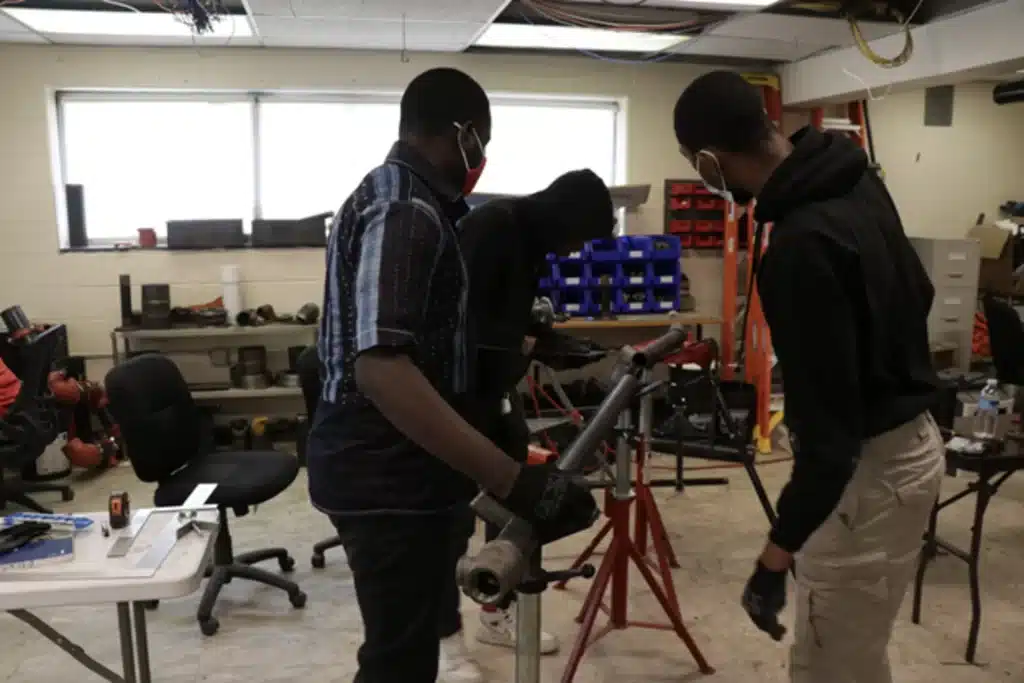Pipefitter training has a rich history as a vital component of the construction sector. Over the years, it has adapted and transformed alongside the ever-evolving construction industry. In this blog post, we embark on a journey to delve into the changing landscape of pipefitter training. This exploration is crucial because modern construction trends continually influence and reshape traditional methods and techniques. With its innovative technologies and sustainability goals, the construction industry has placed new demands on pipefitters.
Their role has expanded to include expertise in advanced materials, green building practices, and intricate systems integration. As we navigate this evolving terrain, we will unravel the challenges and opportunities that emerge for aspiring pipefitters. Understanding these shifts is essential for those entering the field and experienced pipefitters looking to stay at the forefront of this vital trade.
Traditionally, pipefitting training has been an integral part of plumbing schools and construction trade schools. These institutions have provided aspiring pipefitters with the knowledge and skills to excel in their field. However, the construction industry is transforming, driven by technological advancements and changing project demands.
One of the most significant modern construction trends affecting the pipefitting industry is technology integration. Today’s construction sites feature advanced tools and equipment, such as computer-aided design (CAD) software and robotic welding systems. To remain relevant, pipefitting training programs must incorporate these technologies into their curriculum. This ensures that graduates are proficient in traditional pipefitting techniques and equipped to work with cutting-edge tools.
The construction industry increasingly embraces sustainability and green building practices. This shift impacts pipefitters directly as they are responsible for installing energy efficiency and water conservation systems. As a result, pipefitter training now includes modules on green construction practices, ensuring that future pipefitters understand the importance of sustainability and can contribute to environmentally friendly projects.
Safety is a paramount concern in the construction industry, and pipefitters play a crucial role in maintaining a safe working environment. Modern construction trends emphasize improved safety protocols and equipment. Therefore, pipefitter training programs must prioritize safety training, teaching students the latest safety regulations and practices to reduce workplace accidents and injuries.
The construction industry is experiencing demand shifts due to urbanization and population growth. These changes influence the types of projects pipefitters work on, including high-rise buildings, infrastructure development, and industrial complexes. Pipefitter training programs must adapt to these evolving demands by offering specialized courses catering to different construction projects’ specific needs.

In addition to technical skills, modern construction trends highlight the importance of soft skills in the industry. Effective communication, teamwork, problem-solving, and adaptability are crucial for success on construction sites. Pipefitter programs and construction trade schools recognize this and are now incorporating soft skills development into their curricula to produce well-rounded professionals.
The construction industry is subject to ever-evolving regulations and codes, and pipefitters must stay informed and compliant. Pipe fitter training institutes are now focused on educating students about the latest industry standards and codes, ensuring graduates are well-prepared to navigate the regulatory landscape.
In conclusion, the pipefitting industry is not immune to the changes and advancements sweeping the construction sector. Pipefitter programs must adapt to modern construction trends by incorporating technology, green practices, safety measures, specialized skills, soft skills, and up-to-date regulations. By doing so, these training programs ensure that the next generation of pipefitters is well-prepared to meet the evolving demands of the construction industry and contribute to its continued growth and innovation.
Read More: